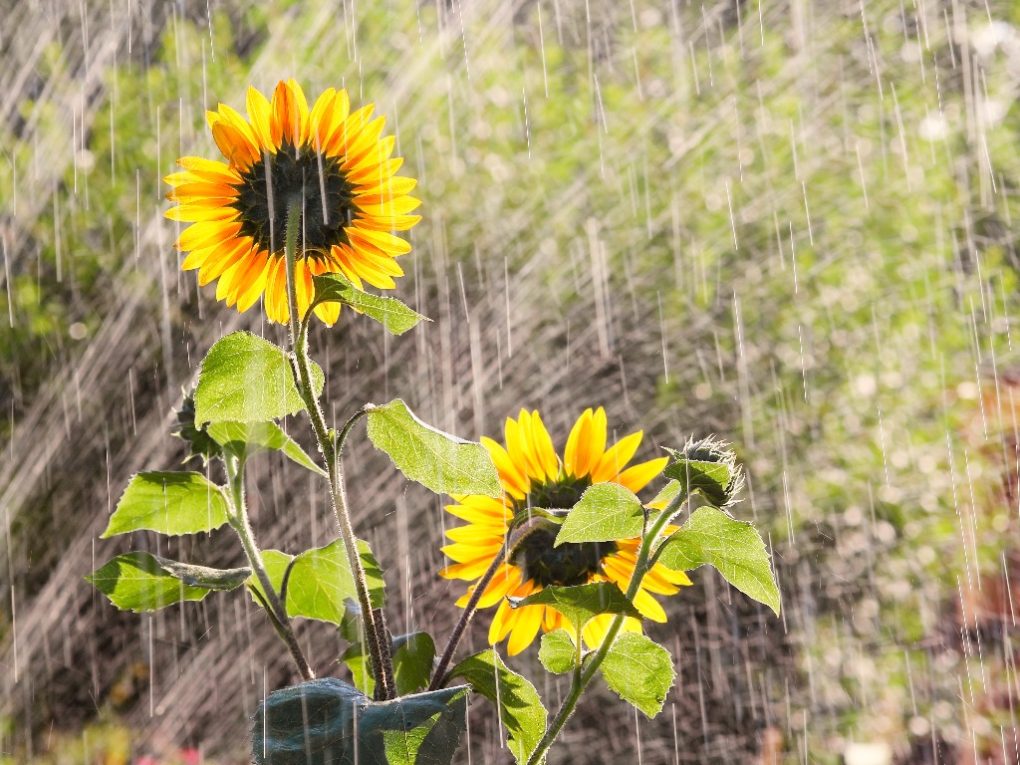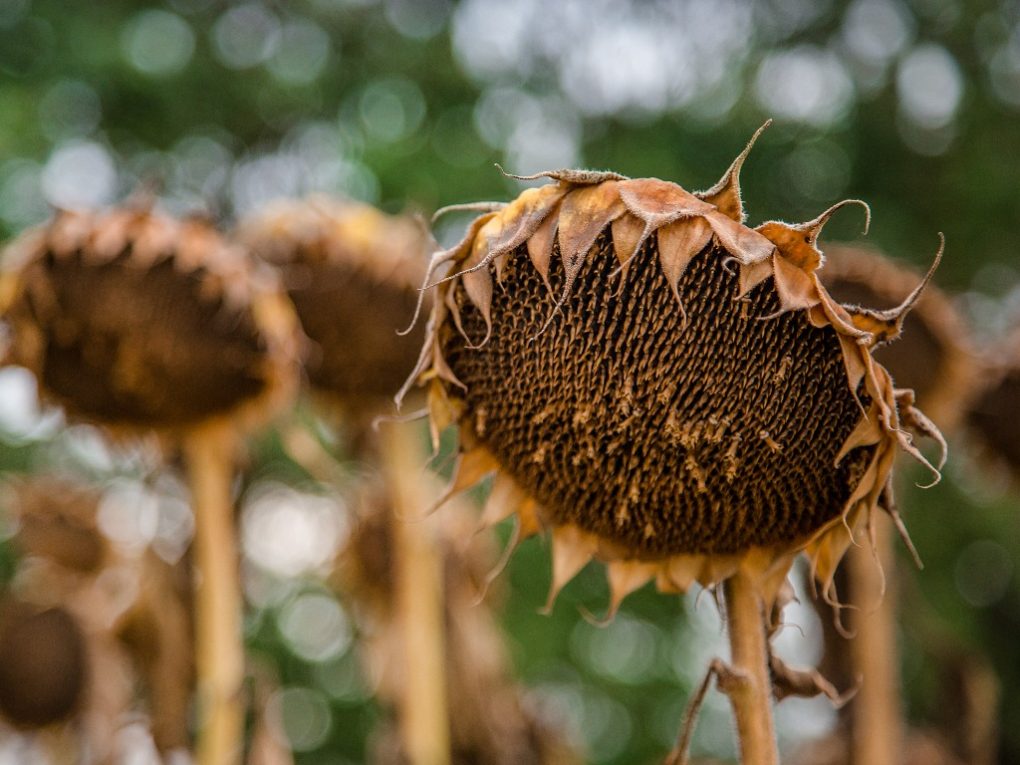What Does Sunflower Need to Grow: Quick Guide When Growing Sunflower
Sunflowers are relatively easy to grow, and they require the following conditions to thrive:
- Sunlight: Sunflowers need plenty of direct sunlight, at least 6-8 hours per day, to grow tall and strong. Pick a garden spot that receives full sun throughout the day.
- Soil: Sunflowers prefer well-drained soil that is rich in organic matter. If your soil is heavy or compacted, think about adding compost or other organic matter to improve its texture and fertility.
- Water: Sunflowers require regular watering, especially during hot and dry periods. Water deeply and consistently to keep the soil moist but not waterlogged.
- Nutrients: Sunflowers are heavy feeders and require ample nutrients to grow strong and produce large flowers. Fertilize your sunflowers with a balanced nitrogen, phosphorus, and potassium fertilizer.
- Space: Sunflowers need plenty of room to grow above and below ground. Plant them at least 2 feet apart in all directions for adequate air and sunlight circulation.

Table of Contents
Tips to Plant, Grow, and Care for Sunflowers
Choose the Right Location
- Space: Sunflowers need plenty of space to grow, so choose a location with enough room for the plants to spread out. Sunflowers can grow from 1 to 16 feet tall and 1 to 4 feet wide, depending on the variety.
- Wind protection: Sunflowers can be susceptible to wind damage, so choose a location protected from strong winds. Also, consider planting a windbreak around your sunflowers to provide additional protection.
- Temperature: Sunflowers are warm-weather plants and prefer temperatures between 70 and 78°F (21 and 26°C). Make sure you choose a location with a warm microclimate sheltered from cold drafts and frost.
- Planting time: Sunflowers should be planted after the last frost in the spring once the soil has warmed up. Depending on your location, this could be anywhere from early April to late May.
Plant at the Right Time
Sunflowers are warm-season annuals that require a long growing season with plenty of heat and sunlight. It would be best to plant them in the spring after the last frost has passed and the soil has warmed to at least 55°F (13°C). Sunflowers need between 80 and 100 days to mature and bloom, so choose a planting date that allows enough time.
If you live in a cooler climate, you can start your sunflowers indoors 2-4 weeks before the last frost date and transplant them outdoors once the soil has warmed up. First, harden them off by gradually exposing them to outdoor conditions over a week.

If you want to extend your sunflower season, you can plant a second batch in midsummer for fall blooming. However, plant them at least 90 days before your first expected fall frost.
Plant Seeds at the Right Depth
Planting sunflower seeds at the right depth is essential for their proper growth and development. Here are some tips for planting sunflower seeds at the right depth:
- Determine the recommended depth: Sunflower seeds should be planted at a depth of 1.5-2 inches (2.5-5 cm) in the soil, according to the Province of Manitoba. However, the exact depth may vary depending on the variety of sunflower you are planting, so be sure to check the seed packet or ask your local gardening expert for advice.
- Prepare the soil: Prepare the soil by removing any weeds and rocks and then loosen the soil to a depth of at least 6-8 inches (15-20 cm).
- Plant the seeds: Using a hoe or your finger, create small holes about 6-12 inches (15-30 cm) apart, depending on the variety of sunflowers you are planting. Drop one or two sunflower seeds into each hole, then cover them with soil. Firm the soil gently around the seeds.
- Water the seeds: After planting, water them well to help them settle into the soil. Keep the soil moist but not waterlogged.
- Provide proper care: As the sunflowers grow, provide them with proper care by watering them regularly, providing ample sunlight, fertilizing as needed, and protecting them from pests and diseases.
Water Regularly
Watering is crucial for the growth and health of sunflowers. They need regular watering, especially during their growing period. However, it is important not to overwater them as it can lead to root rot and other diseases. Here are some tips for watering sunflowers:

- Water deeply but infrequently: Sunflowers prefer deep watering, which means watering the soil to 6 to 8 inches. Watering deeply encourages the roots to grow deep into the soil, which makes the plants more drought-tolerant.
- Water in the morning: Watering sunflowers in the morning allows the plants to absorb the water before the day’s heat. This helps prevent the leaves from burning in the hot sun.
- Avoid watering the leaves: Watering the leaves can encourage fungal growth and other diseases. It is best to water the soil around the base of the plant.
- Mulch the soil: Adding a layer of organic mulch, such as straw or shredded leaves, around the base of the sunflowers can help retain moisture in the soil and reduce the need for frequent watering.
- Monitor the soil moisture: Sunflowers need moist soil but not waterlogged soil. Monitoring the soil moisture regularly and adjusting the watering schedule accordingly is important.
Fertilize
Fertilizing sunflowers is important to help them grow strong and healthy. Here are some tips for fertilizing sunflowers:
- Choose the right fertilizer: Sunflowers benefit from a balanced nitrogen, phosphorus, and potassium fertilizer. Look for a fertilizer with an NPK ratio of around 10-10-10.
- Apply fertilizer at the right time: Sunflowers should be fertilized when they are about 6-8 inches tall and again when they begin to flower.
- Apply fertilizer evenly: Spread the fertilizer evenly over the soil around the base of the sunflowers, being careful not to get any on the leaves.
- Water after fertilizing: Water the sunflowers immediately after applying fertilizer to help the nutrients soak into the soil.
- Avoid over-fertilizing: Too much fertilizer can burn the sunflowers and damage their roots. Follow the instructions on the fertilizer package carefully to avoid over-fertilizing.
Support Tall Varieties
Supporting tall varieties of sunflowers is essential to prevent them from toppling over and to ensure their healthy growth. Tall sunflowers can grow up to 10 feet high and may need support to stay upright. You can use stakes, trellises, or cages to support the stem.
Installing the support structure when planting or soon after is best to avoid damaging the roots or disturbing the plant later. You can also loosely tie the stem to the support structure using twine or string to prevent it from swaying in the wind.
Deadhead Spent Blooms
Deadheading spent blooms is an important part of sunflower care. Deadheading refers to removing old or dead flowers from a plant. This encourages the growth of new flowers and prevents the plant from putting energy into producing seeds. Deadheading also helps to keep the plant looking neat and tidy.
To deadhead a sunflower:
- Wait until the flower has finished blooming and the petals have fallen off.
- Use sharp scissors or pruning shears to cut the stem just below the base of the flower head.
- Be careful not to cut into the stem or remove any new growth or buds.

Watch for Pests and Diseases
To ensure healthy growth and yield, watching out for pests and diseases that may affect sunflowers is important. Here are some tips to help you prevent and control common problems:
- Aphids: These small insects can cause yellowing, curling of leaves, and stunted growth. Use insecticidal soap or neem oil to control them.
- Slugs and snails: These pests can chew through leaves and stems, leaving large holes. You can control them using copper tape, diatomaceous earth, or beer traps.
- Sunflower moth: These pests lay eggs on the back of the flower heads, causing the seeds to be eaten by the larvae. Remove and destroy infected flower heads before the larvae hatch to control them.
- Rust: This fungal disease causes yellow-orange spots on leaves, eventually turning brown and dying. Remove and destroy infected plants, and avoid watering from above.
- Downy mildew: This disease causes yellow spots on the upper surface of leaves and a white, powdery growth on the lower surface. Remove and destroy infected plants, and avoid watering from above.
- Root rot: This disease is caused by a fungus that attacks the roots, causing them to rot. To prevent it, avoid overwatering and make sure the soil is well-drained.
- Birds: Birds love to eat sunflower seeds, so if you want to save the seeds for yourself, you may need to protect the flower heads with netting or other barriers.
